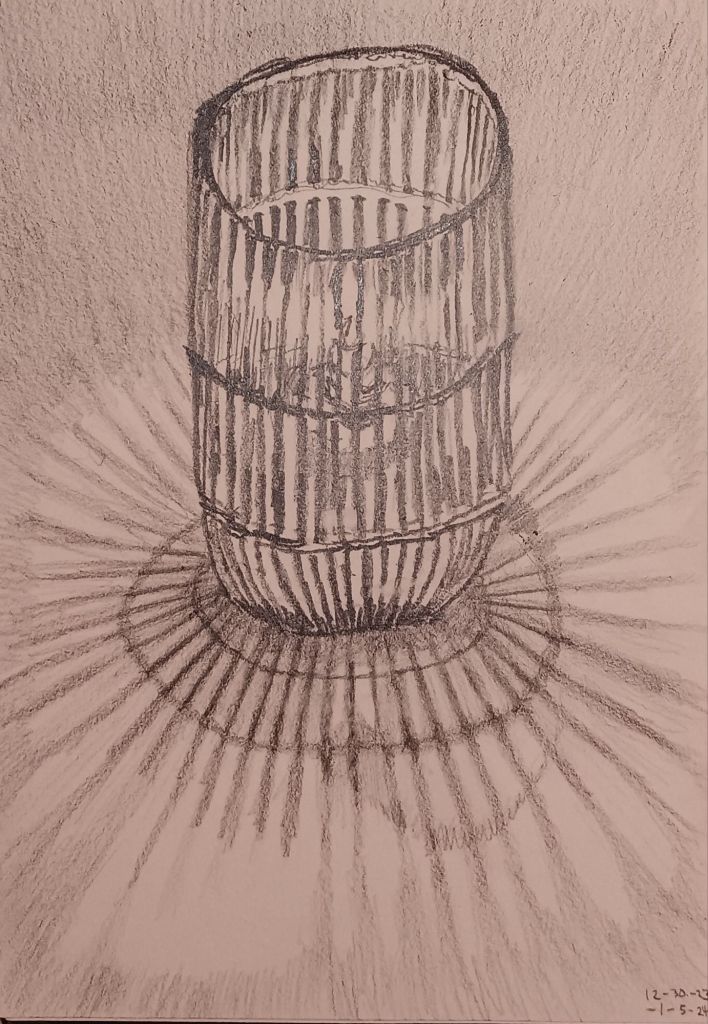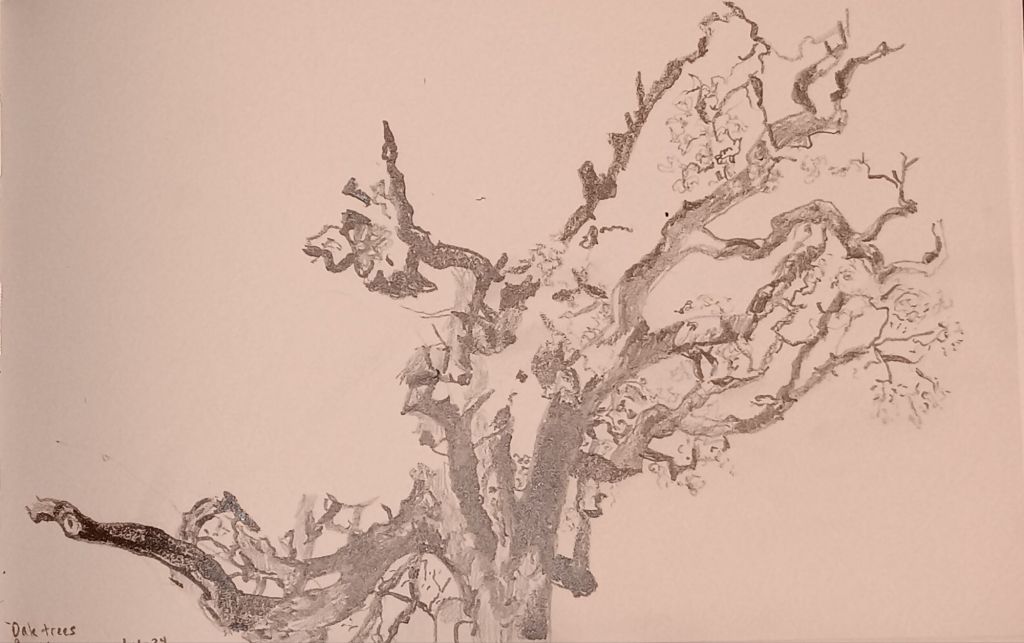You are currently browsing the monthly archive for January 2024.
My sabbatical ended on Sunday with a very happy return to UUCPA. But I have one more post to write about what I did on sabbatical.
One thing I thought I might do was get back to the book I began several years ago, and maybe even get it completely finished and ready for publication. I did not, but I moved a few steps along that path. I reconnected with the editor, apologizing for letting it drop (I had never signed a contract, but I had been offered one) and asking whether they were still interested; I had a Zoom meeting with her, in which I learned what I would need to do to get the process re-started; and I got my revised proposal about halfway to readiness for submission. I like all the changes Skinner House has undergone that (along with the passage of time) make it necessary for me to revise it, and I’m sure that if they accept it again, the changes will make it a better book. I’m fairly confident they will accept it. But I have not yet finished the proposal.
—————-
The other addition I want to make to this series is the books I’ve read since I last reported on my reading.
I finished The Covenant of Water (Abraham Verghese) and Justice is Coming (Cenk Uygur).
I finished only a couple of chapters of Goodness and Advice (Judith Jarvis Thomson) and then shelved it with the other philosophy books in my office. I guess I wasn’t up for that much dense philosophy. Earlier in the year, I ground to a similar halt with Re-Enchantment Without Supernaturalism, by David Ray Griffin. With a title like that, I have to go back to it–also, he was a process theologian, and a great teacher from whom I was lucky enough to take a theology class during my one semester at the Claremont School of Theology–but it was slow going. I am in the unfortunate position of being at heart a postmodern theologian without having the head to read postmodern theology.
I read:
Demon Copperhead, Barbara Kingsolver. It made me want to reread David Copperfield, which I think I read in high school (I may be imagining that), but I couldn’t do that right away because I had finally gotten hold of the book I’d been impatiently waiting for:
The Fraud, Zadie Smith. I wanted to keep reading Smith after that, so went straight on to
On Beauty, Zadie Smith, which I might have liked even more than The Fraud. They were great in different ways.
Deep History: The Architecture of Past and Present, Andrew Shyrock. I’ve already forgotten what put me on to this book. I read some chapters deeply and skimmed others. It was very interesting.
The Sword of Summer, The Hammer of Thor, and The Ship of the Dead, Rick Riordan’s Magnus Chase trilogy. My daughter had recommended them ages ago when she first got into Riordan. She liked Percy Jackson best; that’s Greek mythology, and I liked it but I have a particular love for the Norse myths, which is the milieu of this trilogy. I finally got around to them and gobbled them up like buttered popcorn.
Also fun, easy reading: Killers of a Certain Age, Deanna Raybourn.
Let’s see, that’s going backwards. What did I read more recently? Oh right.
The rest of the assigned books for my grad school course: How to Lead When you Don’t Know Where You’re Going, Susan Beaumont; The Art of Relevance,Nina Simon; and The Church Cracked Open, Stephanie Spellers. We were also assigned Salsa, Soul, and Spirit, by Juana Bordas, but I had read it for a course the previous fall, so that was just a skim.
The Angel’s Game and The Prisoner of Heaven, Carlos Ruiz Zafón. I did not read them in Spanish, though a UUCPA member assures me I could do it. These are the second and third books in his series about the Cemetery of Forgotten Books, so the last one, The Labyrinth of Spirits, is on my must-read-soon list.
Most of Music is History, Questlove. Thanks to my mom for recommending this one. Not only has he forgotten far more than I’ll ever know about popular music in the United States, but his thoughts on history itself are deep and fascinating. I let it go back to the library before I was finished, but I’ll resume it one of these days.
Passage, Connie Willis. This one-off, with its serious inquiry into the nature of death, was so, so good that I had to dive back into Willis, so I read two of her Oxford Time Travel series I hadn’t read yet:
Blackout and All Clear. They are really two halves of the same book, as I learned when I started reading All Clear and felt like I had plunked myself down in the middle of something. I had; it should be labeled Volume 2. I had to go get Blackout (unlike All Clear, we didn’t own it) and start from the beginning, and I was really glad I did. Willis has successfully implanted her version of London in the Blitz in my mind, to the extent that I could ask an actual survivor of the Blitz what it was like and I might look askance at them if their version contradicted hers. That’s historical fiction for you. Hers is so well-done that I have to remind myself that she wasn’t there either. She’s just trying to bring it to life for those of us who were born at a later date.
“The Fall of the House of Usher,” Edgar Allan Poe, which I reread because the television version was the talk of the internet. I love his lush, dense prose, but it didn’t make me want to watch the show, or read more Poe, for that matter. Sorry, Edgar.
Since Christmas, when I gave and got a pile of books: The latest No. 1 Ladies Detective Agency book, From a Far and Lovely Country, Alexander McCall Smith; A Study in Drowning, Ava Reid. Joy picked books for us based on the recommendations of Alix E. Harrow, since all of us liked her novels. Harrow is right; Reid is an excellent writer; but this one was for young adults, and it had one of the failings to which young adult fantasy (though not Riordan’s) is prey: the strikingly beautiful young female protagonist is so clueless about love that she keeps having experiences where suddenly noticing that she can feel the main male character’s breath makes her flush, “for some reason,” and she wishes he would stay in her room awhile longer, “for some reason,” and he looks at her for an uncomfortably long time, “for some reason,” until I start to have fantasies of being a young-adult-fantasy editor so that I could hit Ctrl-F, search for “for some reason,” and delete its every appearance. This one was particularly egregious because before she started crushing on him, she found a piece of paper where he had written her name over and over, and it still came as a surprise to her that he was crushing on her. No one in the real world is that naive. The plot was a bit of a mess, too, but despite all of this, she is a writer I’ll watch for. There was just so much there that made me want to keep reading.
And on our way to Solvang just after Christmas, I downloaded a few books I was willing to read or reread, hoping the fam would all agree on one. They did: The Book of Form and Emptiness, Ruth Ozeki. So I reread it, first listening en route, then finishing it via audio and eyes after we got home. What a great book. The only problem with Ozeki is that she can’t write as fast as I can read, and I am forever impatient for her next book.
———————
Finally, I assure anyone who has read this series of posts and thought “Did she sleep at all during sabbatical?” that I did, as late as I wanted to most days, and that I also took time to do two crosswords (New York Times and Washington Post) almost every day, and also do my daily Spelling Bee, Connections, Wordle, and Quordle. I didn’t think my word games took that much time until this week, when I got back to work and my Spelling Bee game really began to suffer. I wrote this series of posts because I have an overwhelming tendency to look back at opportunities like this and think I wasted them (anxiety: it’s the fun mental disorder!). I needed to document, for my own sake, what I’ve been doing, so that I could look back on these posts and reassure myself that I did not waste the time.
And it is totally legit for sabbatical to be a time of relative relaxation. For me, the biggest stress reliever is simply not having anything I must do. Reading–even books that are pretty heavy, slow going–and making art and playing piano and going to the gym are all challenging in their way, but like the Sunday crosswords, they are the challenges I enjoy. The daily tasks of maintaining a household also continue during sabbatical, but add next to no stress when they aren’t competing with work. So for six months, I could sleep until I was ready to wake, then go up the hill to the gym, then come back and fold and put away a load of laundry, then play piano, without feeling like I was stealing time from my job. I could sit down at the art table at 10 pm and not go to bed until 12 without worrying that I was going to be exhausted during the next day’s meetings.
Now, to add the job back in without unbalancing myself: that’s the next joyful challenge.
I hope you’ll check out my new column, Ask Isabel: Advice for the Spiritually Perplexed or Vexed
To receive it via email each Tuesday, subscribe for free!
Inspired by a colleague who uses Year Compass annually, and freed by the leisure of sabbatical, I decided to do the whole booklet this year. (I can’t remember which colleague, and can’t find whatever Facebook post she had commented on, so thank you, whoever you are!) I say “booklet”; what I actually did was write the headings in my journal and take it to Solvang when we traveled there between Christmas and New Year’s, and answered the questions there. I change journals whenever one runs out, not at the end of the year, but as it turned out, the 2023 questions brought me right up to the last page of my journal, and I began the next volume with the 2024 questions, which was lovely. Now they are on the first page, the easiest place to look when I need to remind myself of my intentions for the year.
Many of the headings in the Year Compass are “magical triplets,” such as: “I am ready to let go of these three things.” “These three people will be my pillars during rough times.” The last of the triplets for the coming year is “I will reward my successes with these three presents.” Those were hard to come up with, and in fact, I have still only come up with two: luscious yarn, and a really nice notebook. I have plenty of both, so buying more would be a special treat. Maybe I’ll make the third one that sundae at Fenton’s Creamery that I’ve fantasized about for a long time. Nothing too crazy, just a couple of scoops of Coffee Cookie Dream with hot fudge and whipped cream. Can you believe I’ve been an ice cream lover in the Bay Area for 20 years and never gone to Fenton’s?
But really, what made it hard to think of rewards was that successes are usually so sweet that they are their own rewards. For example, I aimed to end each work day this week with an empty inbox. (As I’ve written before, for many people this is not a worthwhile goal, but for me it’s invaluable.) Yesterday, just before I turned off my computer and headed home from UUCPA, I snapped a screenshot of this lovely sight.
Who needs more reward than that?

The nice thing about having my sketchbook with me everywhere is that when we’re waiting for the food to arrive at a restaurant, I can draw what’s on the table. When we were in Solvang, we went to dinner at a place that had these nice oil lamps on the tables, with their irresistible patterns of shadow and light.

California’s oak trees always say “draw me,” and I am usually too intimidated to heed them. I like this drawing, though. It’s an exercise in not being too specific–just following the general patterns of the tree. That’s really difficult for me for a variety of reasons. I don’t know if I’ll finish it, but I’ve returned to it for the past few days, having gotten a start on it at the winery where it grows while we were still in SoCal.



Recent comments